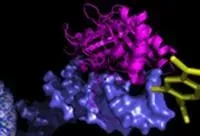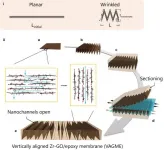(Press-News.org) EUGENE, Ore. -- Jan. 21, 2021 -- Developing economies suffer from a paradox: they don't receive investment flows from developed economies because they lack stability and high-quality financial and lawmaking institutions, but they can't develop those institutions without foreign funds.
A study co-authored by Brandon Julio, a professor in the Department of Finance at the University of Oregon's Lundquist College of Business, found that bilateral investment treaties, commonly known as BITs, can help developing economies overcome this paradox, but only as long as those countries can demonstrate a commitment to property and contract rights.
Julio published the research, "A BIT Goes a Long Way: Bilateral Investment Treaties and Cross-border Mergers," in a paper that published online Dec. 11 ahead of print in the Journal of Financial Economics with co-authors Vineet Bhagwat of the George Washington University School of Business and Jonathan Brogaard of the Eccles School of Business at the University of Utah.
"Controlling for year-fixed effects, country-pair fixed effects, and other determinants of cross-border merger and acquisition activity, we find that the probability of a cross-border merger taking place in a country's economy more than doubles, increasing from 1.6 percent before the treaty to 4.5 percent after the treaty is signed," the researchers stated.
The researchers argue that even in an era of globalization with global capital flows continuing to gain velocity, developing economies should not overlook the value of bilateral investment treaties to overcome what is known as the Lucas paradox.
The paradox was named for Nobel Laureate Robert Lucas, a University of Chicago economist who articulated it in his seminal 1990 paper in the journal American Economic Review. It demonstrated that funds do not flow to poorer countries despite the fact that returns to capital are higher in the developing world.
By looking at mergers and acquisitions, Julio and his co-authors set out to assess whether bilateral investment treaties help spur investment in developing economies.
Using data from Securities Data Co.'s database on mergers and acquisitions, the researchers analyzed merger data for all countries between 1980 and 2014. They then correlated that data with 1,057 BITs from 139 countries.
The analysis found that both the number and size, in terms of dollars, of cross-border deals increased after a treaty was signed. BITs also made mergers more likely between asset-rich companies or those in asset-intensive industries, like mining or airlines because they decrease the risk of government expropriation of property.
"The basic idea is to provide clear and enforceable rules to protect foreign investment and reduce country or political risks, which should encourage investment," the researchers noted.
But BITs are no panacea, according to Julio, Bhagwat and Brogaard.
If a country has a bad reputation for upholding property rights, or seems politically unstable, corporations will not attempt to do business there even if a BIT is in place. Similarly, if a country is already deemed low risk, then a BIT makes a deal no more likely. Countries with median-level political risk benefit the most from these agreements, the researchers said.
"While the results do not completely resolve the Lucas paradox, and most cross-border capital remains within the borders of developed countries, the proportion of cross-border deals flowing from the developed to the developing world has increased significantly as more and more countries sign BITs," they concluded.
As bilateral investment treaties are difficult and time consuming to negotiate and are often struck between nations with more mature economies, the findings from the research encourages leaders of developing nations to look to BITs as a faster way to attract foreign investments from companies in Europe, America and Japan.
So long as a country can demonstrate a commitment to property and contract rights, these agreements can be effective and can support both local economies and equities markets, the researchers concluded.
INFORMATION:
(Story by Michael Maiello)
Links:
About Brandon Julio:
https://business.uoregon.edu/faculty/brandon-julio
UO Department of Finance:
https://business.uoregon.edu/departments/finance
Lundquist College of Business:
https://business.uoregon.edu/
Researchers at Vanderbilt University Medical Center and colleagues have identified genetic factors that increase the risk for developing pneumonia and its severe, life-threatening consequences.
Their findings, published recently in the American Journal of Human Genetics, may aid efforts to identify patients with COVID-19 at greatest risk for pneumonia, and enable earlier interventions to prevent severe illness and death.
Despite the increasing availability of COVID-19 vaccines, it will take months to inoculate enough people to bring the pandemic under control, experts predict. In the meantime, thousands of Americans are hospitalized and die from COVID-19 each ...
A new study from researchers at MIT uncovers the kinds of infrastructure improvements that would make the biggest difference in increasing the number of electric cars on the road, a key step toward reducing greenhouse gas emissions from transportation.
The researchers found that installing charging stations on residential streets, rather than just in central locations such as shopping malls, could have an outsized benefit. They also found that adding on high-speed charging stations along highways and making supplementary vehicles more easily available to people who need to travel beyond the single-charge range of their electric vehicles could greatly increase the vehicle electrification potential.
The findings are reported today in the journal Nature Energy, in a paper by MIT associate ...
DAVIS, Calif., January 21, 2020 - A new peer-reviewed study reveals that the vast majority of U.S. infants may be suffering from a substantial deficiency in an important bacterium key to breast milk utilization and immune system development, as well as protection against gut pathogens linked to common newborn conditions such as colic and diaper rash.
According to the study published today in END ...
Sex-specific chromosomes are a dangerous place to be, if you're a gene. Because these chromosomes -- Y chromosomes, in humans -- do not have a matching chromosome with which to exchange genetic information, they are prone to losing non-essential genes left and right in a process called genetic decay.
Now, a new study from research scientist Daniel Winston Bellott in the lab of Whitehead Institute Member David Page broadens our understanding of what makes a gene able to survive on a sex-specific chromosome by looking at one especially slithery branch of the evolutionary tree: snakes.
Comparing surviving genes on snake ...
PHILADELPHIA -- (Jan. 21, 2021) -- Researchers at The Wistar Institute have discovered a new enzymatic function of the Epstein-Barr Virus (EBV) protein EBNA1, a critical factor in EBV's ability to transform human cells and cause cancer. Published in Cell, this study provides new indications for inhibiting EBNA1 function, opening up fresh avenues for development of therapies to treat EBV-associated cancers.
EBV establishes life-long, latent infection in B lymphocytes, which can contribute to development of different cancer types, including Burkitt's lymphoma, nasopharyngeal carcinoma (NPC) and Hodgkin's lymphoma.
The Epstein-Barr Nuclear Antigen 1 (EBNA1) serves as an attractive therapeutic ...
Two out of five individuals delayed or missed medical care in the early phase of the pandemic--from March through mid-July 2020--according to a new survey from researchers at the Johns Hopkins Bloomberg School of Public Health.
The survey of 1,337 U.S. adults found that 544, or 41 percent, delayed or missed medical care during the survey period. Among the 1,055 individuals who reported needing medical care, 29 percent (307 respondents), indicated fear of transmission of COVID-19 as the main reason. Seven percent (75 respondents) reported financial concerns as the main reason for delaying ...
Researchers from the University Hospitals in Zurich and Basel, ETH Zurich, University of Zurich and the pharmaceutical company Roche have set out to improve cancer diagnostics by developing a platform of state-of-the-art molecular biology methods. The "Tumor Profiler" project aims to derive the comprehensive molecular profile of tumours in cancer patients, which has the potential to predict the efficacy of a host of new cancer medications. It will therefore make it possible to offer treating physicians personalised and improved therapy recommendations.
Three years ago, the researchers began a large-scale clinical study involving ...
PROVIDENCE, R.I. [Brown University] -- When sheets of two-dimensional nanomaterials like graphene are stacked on top of each other, tiny gaps form between the sheets that have a wide variety of potential uses. In research published in the journal Nature Communications, a team of Brown University researchers has found a way to orient those gaps, called nanochannels, in a way that makes them more useful for filtering water and other liquids of nanoscale contaminants.
"In the last decade, a whole field has sprung up to study these spaces that form between 2-D nanomaterials," said Robert Hurt, a professor in Brown's School of Engineering and coauthor of the ...
TROY, N.Y. -- Warnings about misinformation are now regularly posted on Twitter, Facebook, and other social media platforms, but not all of these cautions are created equal. New research from Rensselaer Polytechnic Institute shows that artificial intelligence can help form accurate news assessments -- but only when a news story is first emerging.
These findings were recently published in Computers in Human Behavior Reports by an interdisciplinary team of Rensselaer researchers. They found that AI-driven interventions are generally ineffective when used to flag issues with stories on frequently covered ...
Among the materials known as perovskites, one of the most exciting is a material that can convert sunlight to electricity as efficiently as today's commercial silicon solar cells and has the potential for being much cheaper and easier to manufacture.
There's just one problem: Of the four possible atomic configurations, or phases, this material can take, three are efficient but unstable at room temperature and in ordinary environments, and they quickly revert to the fourth phase, which is completely useless for solar applications.
Now scientists at Stanford ...





